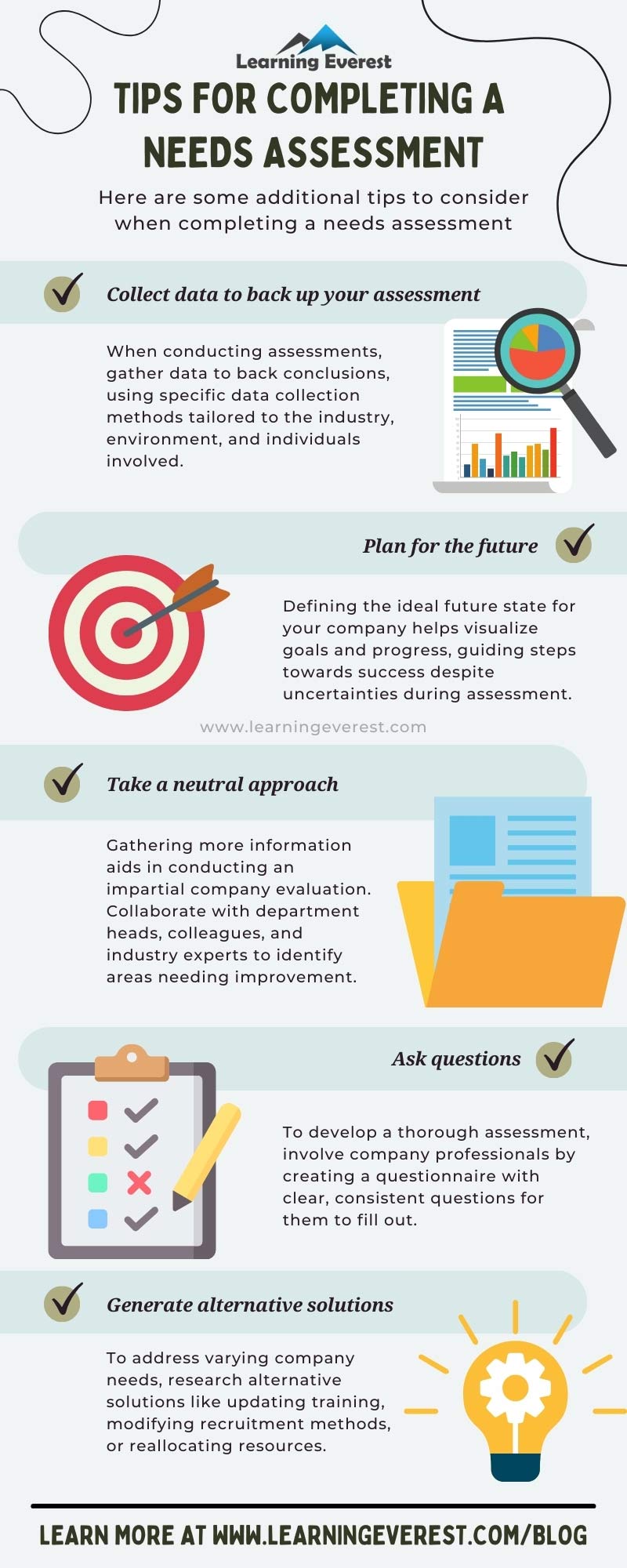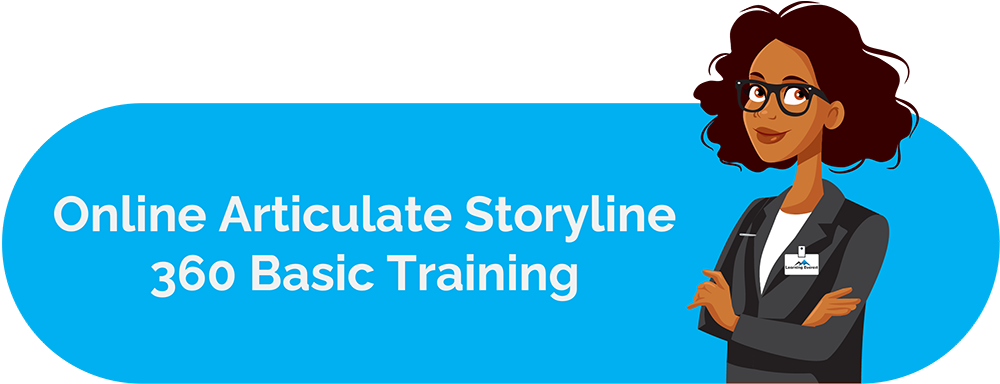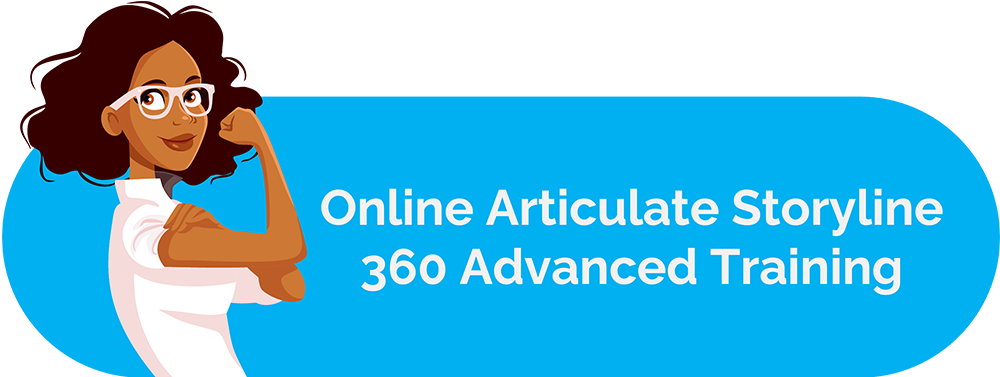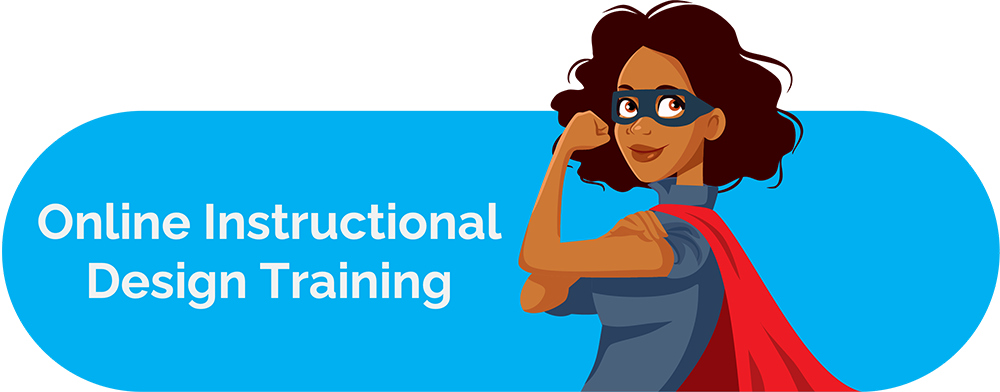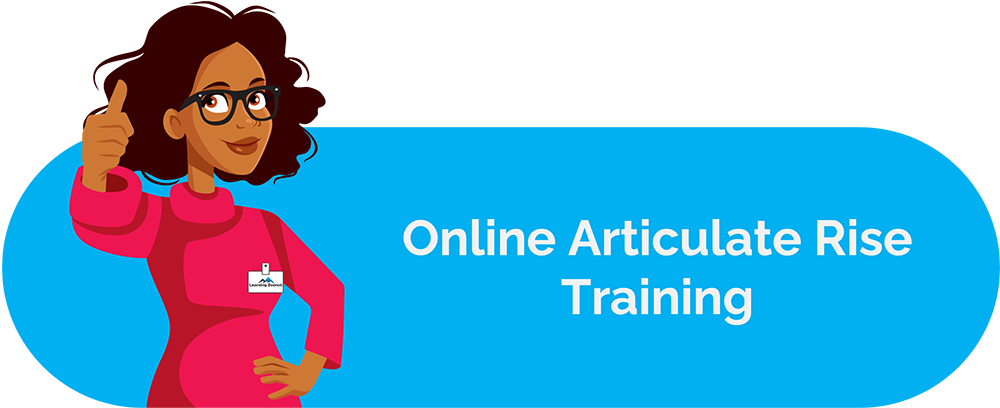Have you ever heard the saying “proper planning prevents poor performance”? That’s precisely where a needs assessment comes into play. In this blog, we delve into the essence of needs assessment and the essential steps to conduct one effectively.
Table of Contents
- What is a needs assessment?
- What is the purpose of a needs assessment?
- Examples where you might employ a needs assessment to accomplish include:
- How to conduct a needs assessment?
- Infographic
- Knowledge Check!
- Frequently Asked Questions (FAQs)
- 1. Why is needs assessment important?
- 2. What is the ultimate goal of needs assessment?
- 3. What is the purpose of a needs assessment?
What is a needs assessment?
A needs assessment is a strategic process used to identify and address “gaps” between current conditions and desired outcomes or “wants”. It’s an integral part of strategic planning and can be applied to different aspects of an organization, such as improving processes, resource allocation, and operations.
The ultimate goal?
To align your organization’s current operations with its strategic objectives, thereby ensuring that you’re not just keeping pace but setting the pace in your industry. A needs assessment typically involves identifying needs, data collection and analysis, application of data, and evaluation. This process helps organizations make informed decisions, justify changes before they are implemented, and continuously improve their performance.
What is the purpose of a needs assessment?
The primary purpose of a needs assessment is to illuminate the path toward improvement within your organization. Whether it is revamping an underperforming customer journey process or automating repetitive manual tasks, a needs assessment helps you not only identify these opportunities but also prioritize them based on impact. It’s about making informed decisions that drive your organization forward.
Examples where you might employ a needs assessment to accomplish include:
Scenario 1: A process to automate duplicate manual work
In many organizations, employees find themselves bogged down by repetitive tasks such as data entry, generating reports, or manually managing inventory. These tasks are not only time-consuming but also prone to human error, leading to inefficiencies and productivity losses.
Scenario 2: A customer journey process that is underperforming
A customer journey that is not optimized can lead to dissatisfaction, poor reviews, and, ultimately, loss of business. This might manifest as a complicated checkout process on an e-commerce site, inadequate customer support, or confusing navigation through a service offering.
Scenario 3: Inadequate employee training programs
Many organizations face employee training programs that do not effectively equip staff with the necessary skills and knowledge. This inadequacy can lead to a range of issues, including decreased employee performance, lower morale, and increased turnover rates. Without proper training, employees may struggle to perform their duties efficiently, adapt to new technologies, or meet the evolving demands of their roles.
In these scenarios, the needs assessment serves as a critical tool for identifying not just the symptoms of inefficiencies or customer dissatisfaction but the underlying causes. But, it can be difficult to point out exactly where improvements are needed. When you’re faced with multiple areas of opportunity, conducting a needs assessment can help you identify the best areas that needs improvement.
How to conduct a needs assessment?
A needs assessment analyzes and interprets relevant data that will influence decision-making. To do this, you need to understand your team member’s needs, as well as the process’s overall desired outcome. Here are the steps to follow when conducting a needs assessment:
1. Identify your team’s needs
Do you know what your team needs? First, you must understand your team to determine the training gaps between existing and ideal processes. Your team members are the closest to the process, and they have valuable insight into potential improvements. Gather feedback from your team or host a general brainstorming session to recognize your team’s most important gaps. Work with your team members to answer the following questions:
- What needs are you trying to solve?
- How is this process currently implemented?
- Where are the most important opportunity gaps?
- What are your desired outcomes?
- Are you looking to solve a specific problem or a more general process?
- Do you have clear, measurable data sources?
- How will you measure success?
Before you start collecting and analyzing information to conduct your needs assessment, take some time to consider your desired outcomes.
2. Measure and allocate the resources at your disposal
Before initiating a needs assessment, it is crucial to accurately gauge your team’s capacity and the budget allocated for the project. Additionally, setting a clear timeline for achieving your objectives is essential. Whether you aim to bridge the gaps within six months or a year, understanding your available resources will enable a structured methodology for your assessment.
The team’s availability and organizational resources will influence the comprehensiveness of the needs assessment. If you assign more time for your needs assessment, you’ll be able to spend more time gathering data.
3. Collect internal information
Next, collect information and collect data on how to solve the identified gaps. Remember that a needs assessment aims to understand how to get from your existing process to the desired outcome. To create an effective needs assessment, you need detailed data, so encourage stakeholders to share in-depth data about their specific needs. The more data you have, the more likely your needs assessment is to succeed. Some questions you can ask when gathering information include:
- Where are improvements needed?
- Why are current methods underperforming?
- What activities must be done to accomplish your objectives?
- What is the probability your solution will be a success?
- What does excellent performance look like?
- Does the organization have enough resources to execute a more successful process?
These will help you gather the necessary details to move on to step four.
4. Gather external information
Once you’ve gathered all the information from your project team and stakeholders, it is time to gather information from external sources. Getting information from external sources gives you a bird’s-eye view of the entire process. There are multiple ways to collect external information on your target group, including:
- Customer questionnaires: Used to gather quick, high-level customer data from various geographical locations
- Observation: Directly observe behaviors and interactions within the target group’s natural environment
- Focus groups: Used to gather in-depth information from a specific geographical location
- Social media analysis: Monitor social media platforms for trends, opinions, and discussions relevant to your target group
While the kind of needs assessment technique you use will depend on the situation, you should opt for the one that provides you the best chance of correcting inefficiencies.
5. Use your data
At this point, you’ve gathered all of the information you can. The only thing left to do is to use your results and insights to make a final report and an action plan.
Implementing the action plan for your needs assessment will take time. To ensure effective implementation, establish a structured approach using project management tools to organize information and facilitate communication among team members. Moreover, effective change management strategies should be employed to document needs and gap changes while leveraging business process management techniques to analyze and enhance processes.
If you want to improve efficiency and productivity as a team, we can help. Schedule a meeting with us today to learn more.
Infographic
Knowledge Check!
Frequently Asked Questions (FAQs)
1. Why is needs assessment important?
A needs assessment is a strategic process used to identify and address “gaps” between current conditions and desired outcomes or “wants”.
2. What is the ultimate goal of needs assessment?
To align your organization’s current operations with its strategic objectives, thereby ensuring that you’re not just keeping pace but setting the pace in your industry.
3. What is the purpose of a needs assessment?
The primary purpose of a needs assessment is to illuminate the path toward improvement within your organization.


